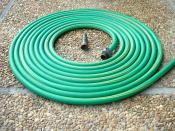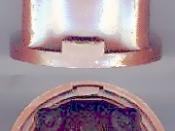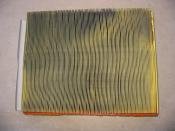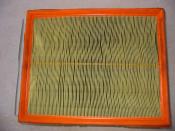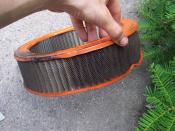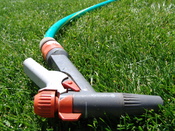You will need to soften up the grime before you begin. Start up the car and let it run for a few minutes. When the engine has cooled to warm, you can start covering up parts that will not react well to cleaners and water. You don't want water in your air filter or down the dipstick.
Plastic bags and rubber bands work best to cover up parts. You will want to seal up the air intake and air filter. The distributor and coil should also be covered. Use large bags for larger parts. Even if parts are already pretty well sealed, such as the distributor cap, cover it any way. You're goal is to cover every hole and part you can. Check the tightness of all caps. You may want to remove the battery if possible. This will allow you to clean the tray. If you decide to leave it, cover it tightly.
Once the engine is sealed, spray the entire compartment with a non-petroleum based degreaser. Do not use dish detergent or laundry detergent. Purchase a product that is made for cleaning engines. Allow the degreaser about 5 minutes to work and then use a cotton towel or rag to remove the heaviest grime spots. Be careful when working around wires and thin cables. Respray any areas that need additional cleaning. When the entire engine and engine compartment has been cleaned of grease, spray it thoroughly with water. Typical garden hose pressure should be enough to remove the worst grime. You make have to repeat the degrease and spray process several times until the engine department begins to look clean again.
Now that the engine compartment is clean, remove all the plastic bags and rubber bands. Dry any wet areas and aluminum parts with a soft cotton towel. Never throw away an old towel. They are great for cleaning cars. Start the engine and allow it to heat up. This will dry the rest of the engine and evaporate any water that may have found its way into components.
Once everything is dry and has cooled down again, apply a coating of rubber protectant to the rubber hoses, plastic shields and rubber gaskets. Never use this product on belts. If you don't know why, you shouldn't be under the hood.
For aluminum areas that are dull or have whitish corrosion, a mild metal polish will bring them back to life. Painted areas of your engine compartment should be waxed just like the rest of your car. Hinges, cables, latches, and hood shocks should receive a thin coating of non-silicone lubricant.
Now that your engine is all clean or hopefully cleaner than it was, try to keep it that way. Always clean up any spills and make it a habit to check for dirt and foreign objects often.
Be sure to burn or throw away any greasy towels or rags. Don't leave them in a pile in the corner of your garage. Now it's time to go show off your nice clean car. Have fun.
